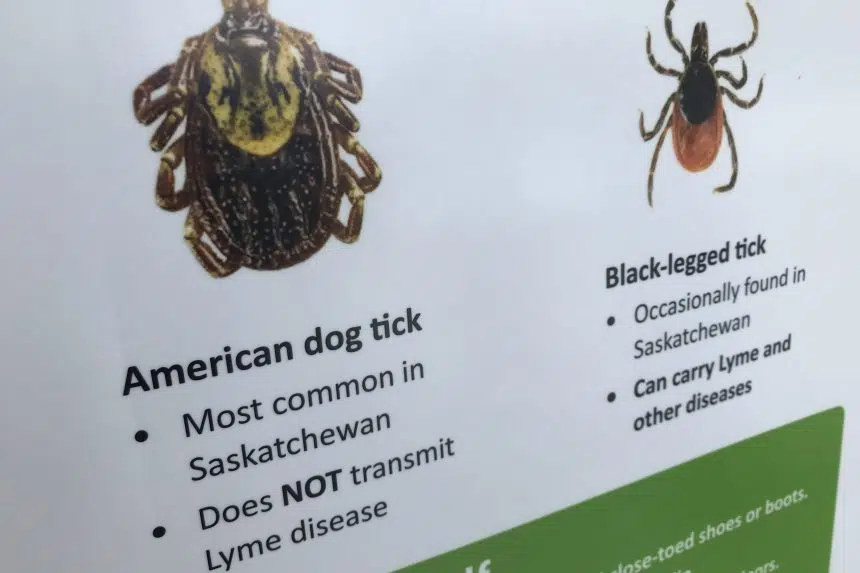As people start to spend more time outdoors in Saskatchewan, they’re being reminded to make sure they don’t pick up ticks.
The province’s Ministry of Health said Friday that people should remember that ticks often are in tall grass, brush or wooded areas and will latch onto people or pets who brush up against them.
“People should check themselves, their children and their pets for ticks after spending time outdoors,” deputy chief medical health officer Dr. Julie Kryzanowski said in a release. “Taking precautions, like pulling your socks up over your pant legs and using effective insect repellents, will reduce the risk of tick bites.”
The most common tick species in Saskatchewan is the American dog tick, or wood tick. They’re most active from spring to early summer, the ministry said, but they can’t transmit Lyme disease to people.
The ministry said Lyme disease is transmitted by blacklegged ticks, but the risk of transmission is low in Saskatchewan.
The Ministry of Health, the University of Saskatchewan and eTick identify ticks collected in the province. In 2022, 1,308 ticks were collected in the province and only 17 were blacklegged ticks.
“Seven of these were submitted for testing and none of them tested positive for the bacteria that causes Lyme disease,” the release said.
To date, blacklegged ticks haven’t been found in Saskatchewan, but people should be vigilant when travelling to other provinces or countries where there are established populations of blacklegged ticks.
To prevent tick bites, the ministry suggested wearing light-coloured clothes so ticks can be easily seen, wearing pants, long-sleeved shirts and shoes that cover bare feet, pulling socks over pant legs to prevent ticks from crawling up the legs, using insect repellents that contain DEET or Icaridin and applying it to clothes as well as skin, showering or bathing as soon as possible after being outside to wash off loose ticks, and doing full-body tick checks as soon as possible after being outside.
If a tick has attached itself, a person can remove the tick with fine-tipped tweezers, grasping the tick’s mouthparts as close to the skin as possible. People are reminded not to put Vaseline, gasoline or other harmful substances on an attached tick.
Photos of ticks can be sent to etick.ca for identification. Ticks can be euthanized by putting them in a bag and storing them in the freezer for 24 hours.
More information on ticks, Lyme disease, and identification and testing is available here and here.







